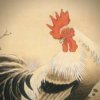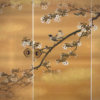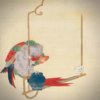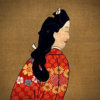Umeto Zaishin, Zaikin, Zaitei: The Lineage of the Hara School of Painting
Umeto Zaishin
Umeto Zaishin (梅戸在親, 1795-1883) was born in 1795 as the fourth son of Hara Zaichū, and at the age of 22, he succeeded the Umeto clan, a clan of government officials from Kazan’in. He learned to paint from his father, Zaichū, and succeeded the techniques of the Hara school.
After the death of Zaichū, he followed his father’s footsteps and worked as a painter for the Imperial Court. He was highly regarded as a master of the Hara school for creating mural paintings in the Imperial Palace when it was built in 1855, arranging a six-panel folding screen on Princess Kazunomiya’s marriage, and designing a folding screen inspired by the Tale of Genji to celebrate shōgun Tokugawa Yoshinobu’s move to the capital. After the death of his older brother, Hara Zaimei, he especially played an active role in mentoring Hara Zaishō and Hara Zaisen as the guardian of the Hara school, and died in 1883 at the age of 89.
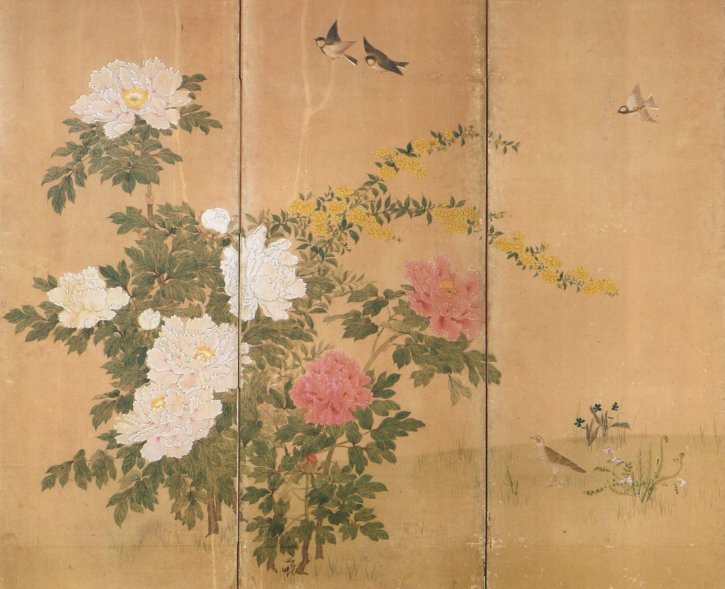
As shown in the image, the style of painting is extremely peaceful, and vividly displays the forms of the Hara school, an official painter of the Imperial Court. The sketch-based approach to painting tells the intimate relationship that the founder, Hara Zaichū had with Maruyama Ōkyo, and the clear expressions add a hint of the Tosa school’s painting style into the work. What differentiates the work from the Tosa school’s style, would be its style that is similar to that of sketches. This is visible in the expressions of the peonies, and signifies the work’s sketch-based style of painting.
Umeto Zaikin
Umeto Zaikin (梅戸在勤, 1843-1919) was born as the second son of Umeto Zaishin, and inherited his painting craft from his father. Zaishin was the fourth son of Hara Zaichū. He left the Hara clan to join the Umeto clan, a clan of government officials in Kazan’in, and learned to paint from his father, Hara Zaichū.
Hara Zaichū studied under the Kanō school painter, Ishida Yūtei, and was a painter who was also friends with Maruyama Ōkyo. His painting style was eclectic, as he mixed the painting techniques of the Tosa school, known for their traditional yamato-e, with the brushstrokes of the Kanō school similar to that of Chinese-style paintings, and the sketching methods of Maruyama Ōkyo.
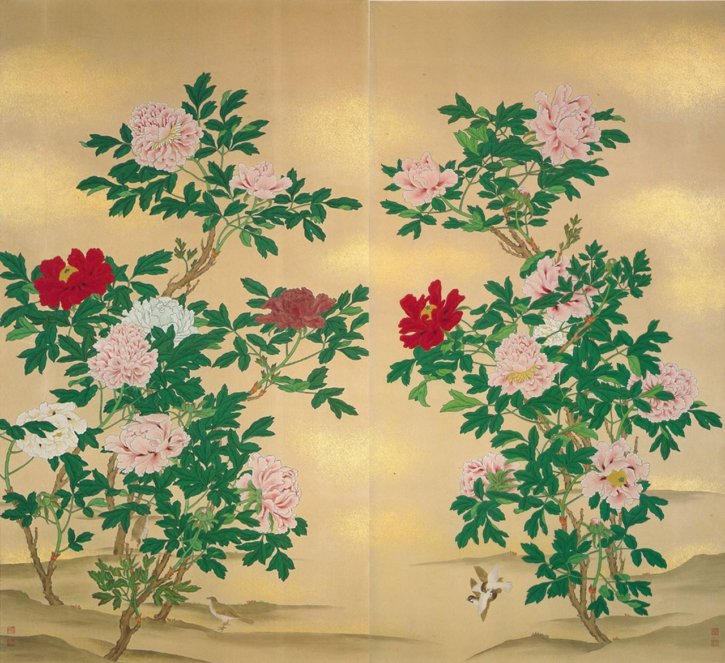
Paintings of peonies, like the one above, were created with the clan’s methods that were passed down by Zaichū, and display a sense of elegance that is expressed for the first time by the third generation. This sense of elegance and sophistication are common in the works by the Hara school, and is assumed to be related to the school’s close ties with the Kyoto Imperial Palace since Zaichū’s time as well as the lineage of Zaichū himself.
Umeto Zaitei
Umeto Zaitei (梅戸在貞, 1883-1964) was born in 1883 as the child of Umeto Zaikin. His father, Zaikin, was a painter who had also worked in the Kyoto Prefectural School of Painting, and he was the grandchild of Hara Zaichū. Zaitei too graduated from the Kyoto City University of Arts’ Faculty of Design in 1903, and succeeded the achievements of his father. His painting style is gentle, formed out of the traditional techniques that had been present since Hara Zaichū’s time, and shows no traces of eccentricity.
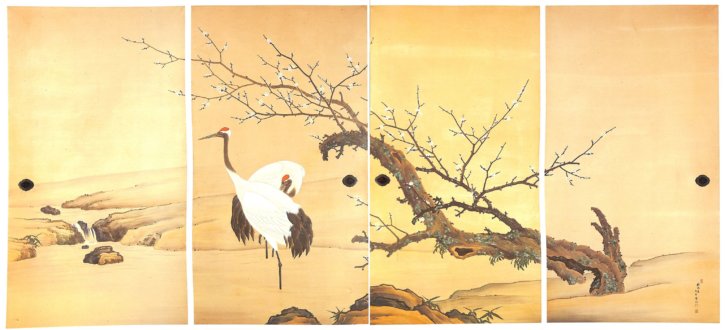
Zaitei started using the pseudonym written in this painting, ‘麒鳳庵,’ meaning ‘qilin, fenghuang,’ to celebrate his contribution to the creation of the Imperial throne for Emperor Taishō’s enthronement ceremony in 1915. His contribution involved painting images of qilins and fenghuangs on the throne.
The composition of white flowers attached to old plum tree branches and two red-crowned cranes standing in the flow of water effectively expresses a calming atmosphere, making the design elegant with no trace of eccentricity.
This work was exhibited at the exhibition, ‘Hara Zaichū and His Schools’ at Kyoto Prefectural Library and Archives in 1976, and according to the records, it is assumed that the work was from 1946. Resources were scarce around 1946 due to the country’s defeat in the war, and people’s lives were in ruins both materialistically and mentally. It comes without saying that Zaitei’s artistic heart that led him to paint something as gentle as this work during such a hard time, was created by the traditions of the multigenerational Hara school. However, there lies a sense of loneliness in the two red-crowned cranes, and it seems to reflect Zaitei’s feelings towards Japan’s defeat in the war, and the changes brought by it as someone born in the Meiji period.

